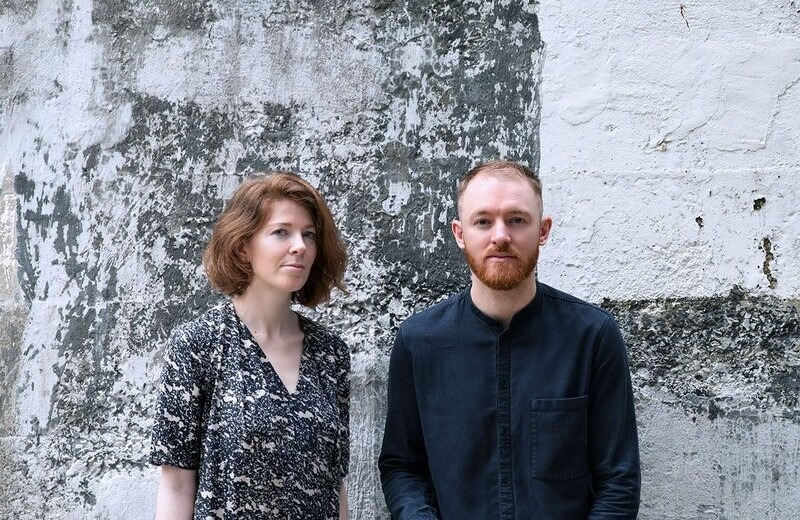What was your experience like studying at Richview?
Neither of us had family backgrounds in architecture, but we were both drawn to it as a profession – Donn had an affinity for making and studied at Letterfrack, in the Furniture Design and Manufacturing school designed by O’Donnell + Tuomey before entering UCD School of Architecture. Elspeth had been redesigning her house on graph paper from the age of 8.
We both loved studying at Richview – the atmosphere of productivity and creative freedom was fantastic. Being that bit removed from the main campus, and working together in one large studio fostered a dynamic energy and sense of community – although it could get noisy, it had a great atmosphere. Our closest friends to this day are friends we made at Richview.
We were also very fortunate to have an amazing teaching staff during our time at UCD Architecture – some of the foremost architects in the country, including Sheila O’Donnell and John Tuomey, Emmett Scanlon, Michael Pike, Mark Price and Mary Laheen, sharing their knowledge and experience with us.
Studying architecture requires a huge commitment. The irregular hours, intensity of the work, and looming deadlines meant it was difficult to get involved with student societies and clubs. We did make time to socialise, but apart from the few students who had mastered time management it was difficult to find the time for organised sports and societies.
From what we have seen, UCD is a school which produces extremely high quality graduates, with a crafted and civic approach to architecture. Close friends of ours whose careers have taken different paths have spoken about how they have also benefited from their architectural studies – it is an all-round education which covers a broad range of subjects including philosophy, art, economics and sociology.
Why did you decide to move abroad after graduating?
We moved to Hong Kong two and three years after graduating – in the midst of the recession. Our move wasn’t entirely prompted by a lack of jobs at home – Donn was working with Grafton Architects and O’Donnell Tuomey, and Elspeth was working at Paul Keogh Architects – we were also seeking new experiences and were open to where those experiences might take us. Donn had applied for a position as Assistant Lecturer at the University of Hong Kong in January 2014, and received an offer in July asking him to be there the following week!
Neither of us had ever been to Hong Kong before our move but were excited by the prospect of living and working somewhere so far removed from what we knew, and in a part of the world that is changing and evolving at such a rapid pace. Our move was made a lot easier by a few good friends and fellow UCD architecture alumni who had been living in the city for a few years at that point, so we had a lot of moral support and advice when we arrived initially.
Elspeth worked on a freelance basis for about a year when we first arrived in the city – gaining experience and meeting people, before taking a position with London/Hong Kong studio Bean Buro for just over two years. The architecture scene in the city is quite different from at home – there is little opportunity for new builds other than developer-led tower blocks, as land is very strictly zoned, therefore many architects find their niche within the interior design landscape.
Tell us about your practice Superposition.
We founded our practice Superposition, as a collaborative, interdisciplinary architecture and design studio. Our work is characterised by an ethical framework combined with a detail orientated and contextual approach to design at a wide range of scales.
Over the past few years, we have been working in China with rural communities and students, and at the University of Hong Kong developing a series of projects and studies that focus on the integration of material, technology and robotics with broader social and environmental issues.
We are currently working on a number of projects in China, Hong Kong and Ireland, including a furniture design and manufacturing project with a rural Chinese village weaving cooperative, a self build modular house in collaboration with a furniture maker – where each modular element is designed so that it can be made in his workshop and assembled on site, and an ongoing revitalisation project which Donn is running at HKU together with a rural village facing modernisation. We work to ensure that each project is approached in a culturally sensitive, sustainable and innovative way.
Although they may seem diametrically opposed, China and Ireland are facing similar issues in terms of architecture and planning at the moment – particularly in relation to the dislocation from our tangible and intangible cultural heritage, erosion of communities, the decline of the rural and increasing urbanization. In addition, the realisation that the way we are currently building is not sustainable, and the search for new methods of procurement, development and sustainable material systems.
What are plans for the future?
Ireland’s construction industry seems to be recovering and it is remarkable to watch things happening from a slight remove. It is a bit disheartening however to see the same developers names coming back around again and the desire to see property prices return to boom levels expressed in the national newspapers. We would love to work more in Ireland, and will perhaps make a return in the near future, but we would be interested to see if we could continue our practice in the same vein we have been working – in an alternative, more publicly engaged and collaborative capacity.

